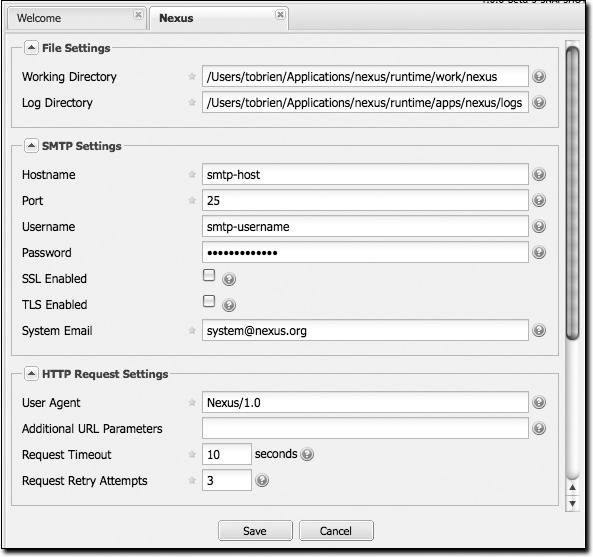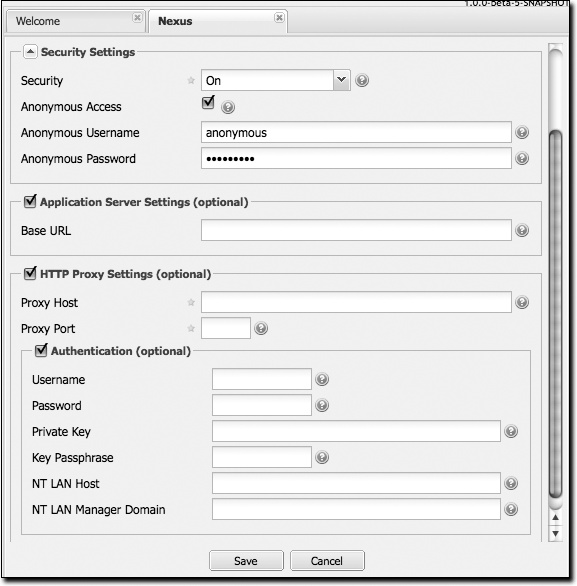Configuring Nexus
Many of the configuration screens shown in this section are available only to administrative users. Nexus allows the admin user to customize the list of repositories, create repository groups, customize server settings, and create routes or ârulesâ that Maven will use to include or exclude artifacts from a repository.
Customizing Server Configuration
In a real installation of Nexus, youâll probably want to customize the administrative password to something other than âadmin123â, and you might want to override the default directories that Nexus uses to store repository data. To do this, log in as the administrative user and click on Server under Configuration in the lefthand navigation menu. The server configuration screen is shown in Figures 16-11 and 16-12.

Figure 16-11. Nexus server configuration (file, SMTP, and HTTP config)

Figure 16-12. Nexus server configuration (security, app server, and HTTP proxy config)
This screen allows you to change:
- Working directory
Under the File Settings group, you can customize the working directory. You may wish to customize the working directory if your Nexus installation is going to be mirroring very large repositories and you want to put your working directory on another partition.
- Log directory
You can change where Nexus ...
Get Maven: The Definitive Guide now with the O’Reilly learning platform.
O’Reilly members experience books, live events, courses curated by job role, and more from O’Reilly and nearly 200 top publishers.

